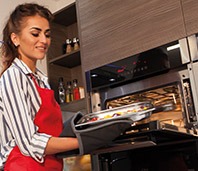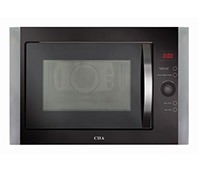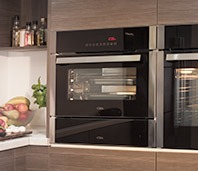CDA Buying Guide: How to cook in a microwave
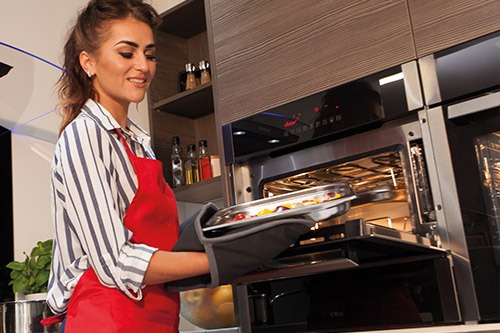
Your microwave is for far more than just heating up baked beans. You can cook so many different types of food and achieve fantastic results by utilising all the inbuilt features and functions on your appliance. We’ve put together this guide to help you get to grips with what your microwave can do, how it works and how to get the most out of it.
How do microwaves cook?
Frequently we hear that microwaves cook ‘from the inside out’, which is not strictly true. Just to clear up any confusion, this is how the science works:
- Inside the microwave is a ‘magnetron’. This generates microwaves. It does not challenge Optimus Prime for the planet, just in case you wondered.
- The food turns on the turntable inside the microwave so that the generated waves can evenly penetrate the food.
- The waves bounce off the walls of the compartment until they hit the surface of the food, which they are able to travel through.
- Once the waves have penetrated the food they cause the molecules to vibrate more quickly, generating heat and cooking the food.
Unlike in an oven, where the food is cooked by conduction from the outside a microwave simultaneously stimulates the vibration of molecules throughout the food. It is also a common misconception that a microwave will penetrate the whole dish. They are actually only able to penetrate the first couple of centimetres, leaving the rest of the food to cook via the conduction of heat. This is also why you may see a ‘standing time’ on microwave cooking instructions. This is to allow for the conduction of heat throughout the food and to ensure even heating results.
What to cook in a microwave?
If you are simply reheating leftovers in the microwave, you are missing out! You can cook anything from lasagnes to cakes using the microwave, with some great results. Large joints of meat are best cooking in a traditional oven though as the water molecules at the edges of meat can dry out if you have to cook for extended periods of time in a microwave.
Microwaves are brilliant at cooking liquids quickly as they easily agitate the ‘looser-packed’ liquid molecules to generate heat, in comparison to tightly formed solid ones. The key to great results with many dishes is frequent stirring to distribute the heat. That way you can enjoy your favourite meals in a fraction of the time.
They are also extremely flexible as the power level can be adjusted to suit what you are cooking. We have included a guide to the power levels in each of our instruction manuals, to help you get the best results from your new compact appliance.
Choose from cooking or defrosting settings, depending on what you are trying to achieve. If you are simply trying to get some mince ready to fry off in a pan or chicken ready to grill then the gentler defrost settings will take care of the texture of the food while it gently and effectively defrosts the meat in just a few minutes.
Many of our microwaves also include a grill and/or a convection oven. This takes the functionality of your microwave to a whole new level as you can brown dishes, just like in a traditional oven. Use the grill in conjunction with microwave cooking to quickly heat up a lasagne and then grill the cheese topping to a bubbling finish or oven cook a chicken…in your microwave. How to cook the perfect potato
A baked potato can take up to two hours in the oven, depending on the size. Why not microwave your potato for 8-10 minutes and then finish off the skin using either your convention setting or your oven for a crispy skin.
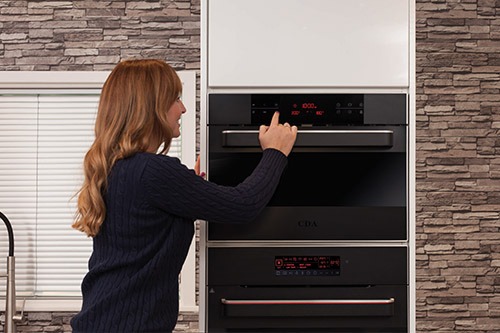
How to heat up leftovers in a microwave
Cooking leftovers must be done safely to avoid upset stomachs and unnecessary food wastage. We recommend that you reheat rice thoroughly, with a tablespoon of water added to steam it through. Cover it with a paper towel and microwave on 75% power for at least 90 seconds, depending on the amount you are heating. Ensure that it is piping hot throughout before serving.
To reheat steak, let it come to room temperature before microwaving. Use the 50% power setting on your microwave and cook for 30 seconds. Repeat up to around 90 seconds until hot throughout.
Reheat food at 30 second-1 minute intervals and stir frequently to ensure good heating results. Add water to foods that are prone to drying out, like dishes with a sauce.
Leave reheated food to ‘stand’ for a few minutes so that the heat can penetrate the food fully and finish the cooking process.
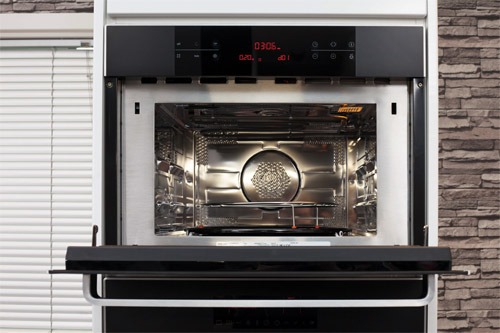
How to cook bacon in a microwave
Think you have to cook bacon in a greasy pan or under the grill? Think again. Simply arrange your bacon on a paper towel, cover with another paper towel and microwave on full power for two minutes. Turn the bacon and repeat the cooking time. Keep doing this until it is crisped to your liking.
How to cook the perfect scrambled eggs in a microwave
For the best scrambled eggs, grease your container slightly to prevent the egg sticking. Add a splash of milk, salt and pepper to your eggs and whisk. Give them 45 seconds and stir, then cook for a final 45 seconds to perfection.
How to make a microwave mug cake
For a quick cake fix, why not make a tasty mug cake in your microwave?
Simply mix 4 tablespoons of sugar, 4 tablespoons of flour, 2 tablespoons of cocoa, 1 egg, 3 tablespoons of milk, 1 tablespoon of butter & ¼ teaspoon of vanilla extract in a mug and microwave on full for 3 minutes. Voila!
Your microwave power levels explained:
100% (High)
- Boiling water, making hot drinks
- Browning mince, cooking poultry, fish or vegetables
- Cooking tender cuts of meat
80–70% (Medium high)
- Reheating
- Roasting meat and poultry, shellfish
- Delicate foods, cheese and eggs
60–50% (Medium)
- Puddings and cakes
- Sauces
- Rice
40–30% (Medium low)
- Defrosting
- Melting butter and chocolate
20% (Low)
- Softening butter
- Softening ice cream
- Proving yeast dough, dehydrating fruit
10%
- Keep warm


